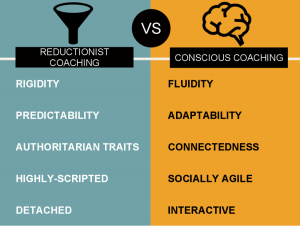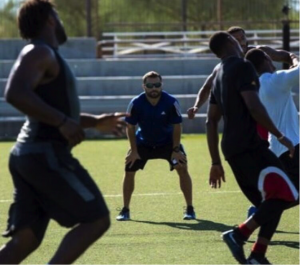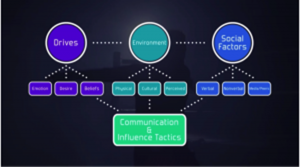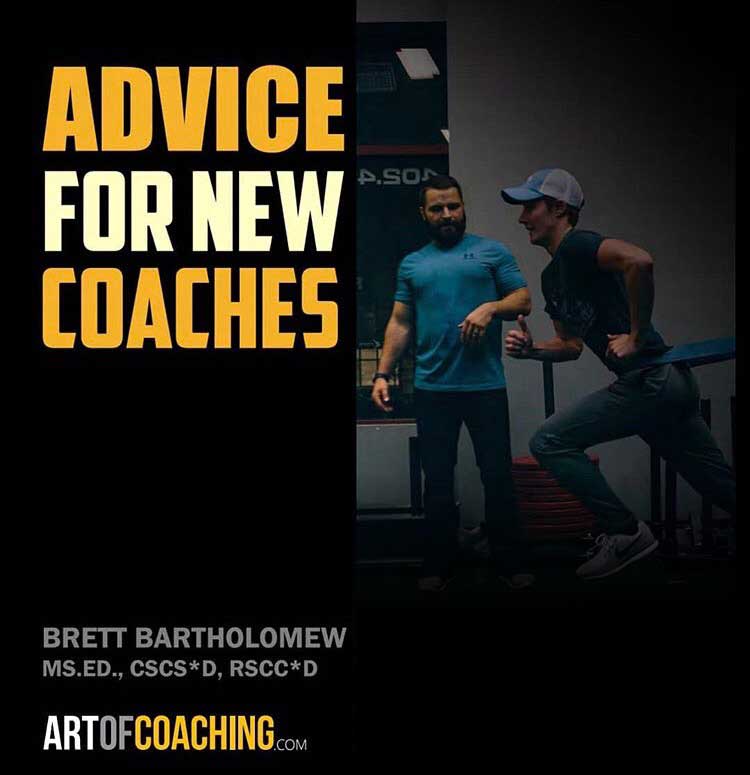Coaching is teaching. And one’s level of effectiveness in teaching is not evaluated solely by what they (the instructor) know, but rather by what their students understand.
Successful behavioral interventions are anchored via successful social interactions. Seems simple enough, right? Wrong. While the mantra may be straightforward, the reality is that communication and human behavior is a complex subject. If this were NOT the case, we wouldn’t have researchers in the space of behavioral economics and/or psychology who are awarded the Nobel Prize. It just doesn’t seem as important to many of us as strength and conditioning coaches because the topic has not been a focal one in our industry.
 You see, we have been focused on trying to optimize human movement (and rightfully so), but we have forgotten to also emphasize human behavior.
You see, we have been focused on trying to optimize human movement (and rightfully so), but we have forgotten to also emphasize human behavior.
We do still actually coach people, right?
In general, people are puzzles of needs, wants, drives and insecurities. It’s our job as coaches to find or even be that missing piece for them. And in doing so, we can gain their trust and respect all while augmenting engagement and effort which will only help our training programs become more effective in the long-run. This is not manipulation; it is adaptation! Personalized coaching strategies are the most direct way towards driving the behavioral interventions that we need to take place, so our athletes have a better chance at reaching their goals.
Below are some quick and easy-to-use tips that you should abide by whenever you are leading a session. They may seem obvious, but common sense is not common practice, and learning how to communicate in a versatile manner requires just as much fine-tuning as any other aspect of our craft.
1. Listen!
This is by far one of the most neglected communication strategies in the world — which is why a lack of it has contributed to everything from failed relationships, to people losing their jobs, to major catastrophes throughout human history. Sound a bit dramatic? Good, because the ill-effects of not being willing to close your mouth and open your ears are parallel to you as a strength coach writing a program without being aware that an athlete under your care has sickle-cell trait or cardiac issue.
That means flexible communication is a must. Besides, everything we do as coaches is a screen of some sort, which should provide us with data (both objective and subjective) that we can use to enhance the quality of care we provide to our athletes. We spend so much time learning about the history of an athlete’s body, but far too little time learning about their mind. You may be the training expert, but only they know what it is like to be them. You will also learn far more from them than you think.
I know that Stephen Covey quotes have been worn out, but there is a reason for that. Perhaps one of his most powerful phrases is, “most people do not listen with the intent to understand; they listen with the intent to reply.” There is often no guiltier culprit than the strength coach as they often feel rushed due to the time and logistical constraints placed upon them while working with large groups or in general. Ask strong, open-ended questions, listen to the answers and write them down or record them just like you would data in a performance profile. Drawing upon this information will help you out in more ways than you think.
2. Speak Their Language
Great coaching is about figuring out an athlete’s purpose and matching it with an evidence-based process. To do this, build off of what your athletes tell you and relate everything you do back to their goals and specific drives. Ask yourself: what do they say they care about most? Why does that matter to them? Learning how to do this efficiently and effectively takes more practice than some care to admit. It is, however, especially effective since you are showing athletes that you are attuned to their goals and have an understanding of what matters most to them. When you speak their language, you scale your message by essentially “talking in color” and painting a vivid picture in their own mind’s eye. This is what leads to increased efficiency while you are on the floor coaching or when you are reviewing their performance results from a previous phase and getting ready to set new goals. It will also help them learn since the information is “stickier” and more personal, which both saves you time as a coach and adds greater significance to the very task you are trying to get them to perform.
 3. Know Their Sport
3. Know Their Sport
As a strength coach, you should be doing this anyway, since the unique demands of their sport are in part what will influence the training programs that you write as well as some of the skills that you teach. However, even if you do understand the biomechanical and physiological aspects of the sport, there are still various cultural and psychosocial aspects to consider. Every sport has its own unique “cultural” aspects that can affect player personality as well as their perception of what constitutes success. This is where a better understanding of human nature becomes even more critical.
Going back the previous tip, it is hard to “speak a language” if you don’t understand the geography of its origins. This metaphor has real meaning since aspects of their upbringing will also influence how they behave in groups, especially as it pertains to working with individual sport athletes vs. team sport athletes. Just as you need to be aware of the myriad of variables that can throw off the success of your training program (poor diet, time constraints, sleep issues etc), you need to keep a keen eye on the “not so obvious” elements of performance which can often be neglected in favor of the typical or more focal aspects of what we do.
 4. Be Transparent and a Bit Vulnerable
4. Be Transparent and a Bit Vulnerable
This can be an uncomfortable one for many, but all I am saying here is that building trust is not a one-way street. You cannot expect to be able to bombard your athletes with both questions and information and expect them to never ask you questions in return, or for you to have to volunteer some information about yourself as well. Not doing so leads to a parasocial relationship, which is the antithesis of what you want when aiming to become a more effective coach. A true professional always welcomes mutual inquiry. By its definition, coaching is a social process; coaches are at the epicenter of it. It was the researcher Pierre Bourdieu who in 1997 first ascertained that the coaching process (as well as coaching practice in general) is to be considered a form of “regulated improvisation.” In his 1996 text, Sociological Theory, Dr. George Ritzer observed that effective practice is neither entirely objectively determined nor the unbridled product of free will. Yes, you heard that right: it is an imperfect practice that can only be refined by your willingness to get your hands dirty and enhance your social skills as well as your technical skills.
5. Alter Your Perspective
It is not uncommon for strength coaches to be viewed by their athletes as someone who “doesn’t get it.” Not every athlete likes lifting weights or various other forms of physical training and can often view the performance side of things as just another task to “check off” so they can get back to playing their sport or living their life. You don’t have to agree with this point of view, but you need to be cognizant of it if you are going to have any hope of reaching your athletes on a truly meaningful and influential level.
One of my favorite movies that I used to watch with my father growing up was “Trading Places,” which starred Dan Akroyd and Eddie Murphy. In the movie, Akroyd played a wealthy commodity broker and Murphy was a broke hustler always looking for his next con. Through both an odd and humorous turn of events, the two ended up switching places and throughout the rest of movie eventually learned the error in regard to their previous biases and behavior. The movie ended with the both of them in a far better place than either were in the beginning, imbued with a renewed sense of perspective, compassion and wisdom. I bring this up because right now it seems like one of the biggest things that coaches like to incessantly complain about is “millenials” and how they behave/interact. I get it, but at the same time, it’s my opinion that grumbling about how it’s hard to coach someone from a different generation is akin to whining that you can’t write a good program because you don’t have enough equipment. Be creative, get outside of yourself and find a way.
These tips serve as only a small thumbnail of the communication strategies that you should be using throughout your coaching career. In my 5-week online course “Bought In” I discuss over 25 more research-driven influence techniques, coaching strategies and behavioral interventions that you can call-upon while working with athletes of any age, any sport and anywhere in the world. All of which will help you become a better coach.
Over 400 people including coaches, trainers, physical therapists, performance directors, teachers and even dentists just went through the first round- and I will be announcing when it will open again soon through my newsletter at ArtOfCoaching.com where you can download a sneak peek of part of the course which includes topics such as those listed below:
- The influence factors that shape athlete behavior
- How we ourselves get in the way of becoming better coaches
- Frameworks and models to get a better understanding of your athletes + how to engage with them
- Influence tactics that can help you change people’s attitudes, beliefs, values and behaviors
As always, thanks for reading!
*This article was originally published via THIS website.




Appreciating the time and effort you put into your website and in depth information you offer. Very inspiring and clear explanation. You’ve really covered up almost all the possible info that every coach. Worth sharing! Please continue sharing your updates! Thanks a lot!